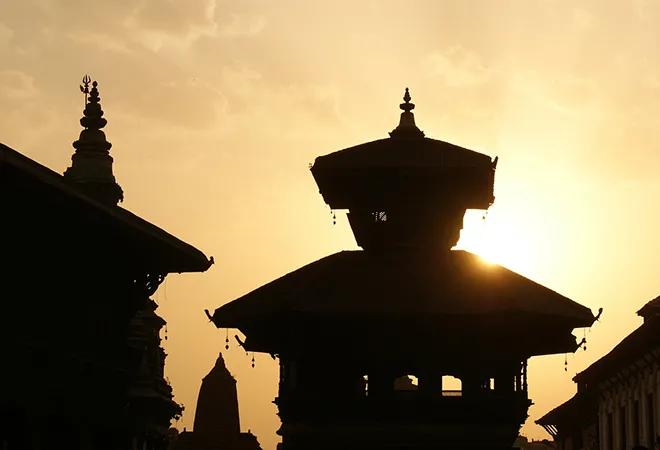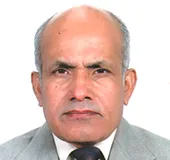
Globally, more than 800,000 people have been succumbed to COVID-19.
There is at least one casualty from this virus every 15 seconds. The average fatality rate due to coronavirus is
3.5 per cent at the global level; while it is
3 per cent in the United States and Brazil, and 1.9 per cent in India. On the other hand, the fatality rate in Nepal is lower than 0.47 per cent — this does not give any room for complacency as the crisis aggravates each day.
On 24 March, when the nationwide lockdown was imposed in Nepal, there were only
two COVID-19 infected patients. In a period of just four months,
the number of confirmed cases spiked to over 17,000 with
40 deaths. A month since the lockdown was lifted partially, as of on 26 August, the COVID-19 infected cases doubled to
34,418 while the death toll reached
175 in the country.
Dr Anup Bastola, spokesperson for Sukraraj Tropical and Infectious Disease Hospital in Kathmandu admits that what we are witnessing now is the
community spread of the virus. Each day only 300 people are tested for free on a ‘first-come, first-served’ basis at this government hospital, though the number of persons visiting this place varies between 1,000 and 1,200. Unfortunately, those who are unable to get tested have to return to their homes as the hospital cannot manage more than 300 patients.
The actual state of vulnerabilities or the risks at the community still remains unknown.
Unfortunately, there has not been enough testing, contact tracing and treatment of the patients in the isolation wards of the hospitals in Nepal. Infrastructure for some of these services could not be developed meaningfully during the first phase of the lockdown period. Therefore, only
targeted tests are being performed on people who happen to be in close contact with an infected persons or who have travelled from COVID-19 hotspots. As such, the actual state of vulnerabilities or the risks at the community still remains unknown.
In Kathmandu Valley, 14 hospitals, including nine public, three private and one community level, were designated for the coronavirus patients. However, 70 per cent of the people tested positive for coronavirus were compelled to observe stay-at-home isolation on account of the lack of isolation beds.
Subsequently, the government of Nepal directed private hospitals to allocate a minimum of
20 per cent beds for COVID-19 patients. But the health experts feel that such a policy would aggravate rather than improve the situation.
Italy was affected most from COVID-19 for its inability to distinguish between COVID-19 hospitals with non-COVID hospitals; as a result of which people who initially did not contract the virus also became victims of COVID-19.
Since COVID-19 cases steadily rose even after partially lifting the nationwide lockdown on 21 July, the district administration office in various districts began to re-impose lockdown/curfew and sealing of the most affected areas one after the other as required.
Remarkably, most of the health-related facilities are confined to Kathmandu Valley. Out of the total
840 ventilators in the country, 80 per cent are confined to Bagmati Province or so to say to the Valley alone. There are only
7 ventilators at government hospitals in Province 2, including three ventilators at Janakpur Provincial Hospital in Janakpur and four in Narayani Hospital in Birgunj whereas it accounts for
58 per cent of total COVID-19 patients in the country.
Since COVID-19 cases steadily rose even after partially lifting the nationwide lockdown on 21 July, the district administration office in various districts began to re-impose lockdown/curfew and sealing of the most affected areas one after the other as required. Reports are that most of the districts in the country (Kathmandu, Janakpur, Birgunj, Rajbiraj, Biratnagar, Dhangadhi, and Nepalgunj) are under lockdown, curfew or seal at the moment. The domestic and international flights continue to remain suspended until 1 September.
Restrictions have also been placed on the movement of people between Nepal and India till 16 September. Only 10 border points between the two countries have been designated for the entry of the Nepalese people from India.
Besides, the government has formed the COVID-19 Crisis Management Committee (CCMC) at the highest level. But there is a lack of coordination between the CCMC and the different government line ministries, though the Prime Minister, Health Minister, Home Minister, Defence Minister, Supplies Minister and the Nepal Army are represented in this body. Most of its decisions are made by CCMC even
without consulting medical and other concerned health professionals. As such, the quality of the test kits and medical equipment along with their
prices are often questioned.
Private health centres and medical colleges in provinces hardly comply with the directives of the provincial governments.
There are also a few other coordination mechanisms at the federal, provincial, district and local levels to deal with the pandemic. A
three-member high-level committee has been constituted in the Ministry of Health and Population to coordinate with the hospitals at the provincial, district and local levels to prevent and control spread of the virus.
The provincial and local governments are expected to play a key role in managing quarantine and isolation centres for COVID-19 patients. However, it is known that the private health centres and the medical colleges in the provinces hardly comply with the directives of the provincial governments.
Another problem is that the cost of testing and treatment of COVID-19 patients is too high. As much as
NRs 104,600 is spent by the government to diagnose a single COVID case (INR 100 is equivalent to NRs 160). At the private hospitals, this costs atleast NRs 60,000 per day to treat a COVID case. If there are complications, or if the patient requires ICU, the cost of the treatment goes up even more — as much as NRs 450,000.
A pro-active plan to to ensure the adequate number of qualitative quarantine facilities, isolation centres and ICU wards for the COVID-19 patients at the minimum possible cost is a critical step.
Because of the inadequacy of public health facilities in Nepal, the poor people are the most vulnerable.
Those who are influential and economically better somehow manage to get the necessary tests and avail the treatment. In India, on the other hand, the
COVID-19 tests are conducted for free at the government hospitals and even at the private labs. The government has scapped the price of a test at
INR 4,500.
Given the seriousness of the situation, Dr G.D. Thakur, former director of the Epidemiology and Disease Control Division, stated, “Our health system will crash if we fail to act immediately to break the chain of the infection.”
What is needed most at this critical juncture is to strengthen coordination between the federal, provincial and local level governments by keeping the health professionals at the center of the decision-making process. Besides, coordinated efforts could also be made to engage the common people, apart from the political parties, NGOs, INGOs and other stakeholders, in the fight against COVID-19. To prevent the transmission from patients to health professionals, it is essential to demarcate COVID-19 hospitals from non-COVID hospitals. Additionally, a pro-active plan to to ensure the adequate number of qualitative quarantine facilities, isolation centres and ICU wards for the COVID-19 patients at the minimum possible cost is a critical step. Equally important is to conduct effective testing and contact tracing on a large scale to break the chain of transmission of the disease. Since time is fast running out, some of these measures need to be addressed on a war footing.
The views expressed above belong to the author(s). ORF research and analyses now available on Telegram! Click here to access our curated content — blogs, longforms and interviews.



 Globally, more than 800,000 people have been succumbed to COVID-19.
Globally, more than 800,000 people have been succumbed to COVID-19.  PREV
PREV


